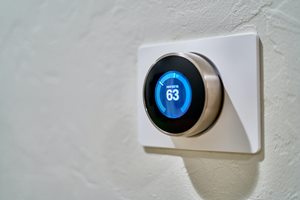“Network infrastructure including fibre broadband and Wi-Fi access points are factored into all new building projects from the outset, with mobile coverage infrastructure taking second place. Both should be given equal status in a world driven by tech,” says Colin Abrey of Nextivity.
Reliable inbuilding mobile connectivity is no longer an optional extra. It is an essential infrastructure to everyday living. Moreover, the benefits of assuring seamless mobile connectivity go far beyond commercial cellular services, reliable mobile coverage offers the potential to deliver significant economic, political, community and sustainability benefits. In fact, cellular has long been heralded as the 4th utility but now that digitisation has gone into overdrive, it has well and truly earnt it critical utility status along with electricity, water, and gas.
And the demand for reliable mobile coverage is only going to intensify as individuals leverage technology to keep a handle on rising cost of living, and nations strive to reduce their dependency on fossil fuels by electrifying their transport systems and constructing buildings capable of generating their own energy.
Whilst the construction industry is taking advantage of mobile to meet its own ends by improving operations and making sites safer, architects and building engineers must consider the mobile coverage requirements of a property from an occupancy standpoint and make sure this is factored in as part of the overall digital infrastructure requirements during the design phase of any new build or property refurbishment project.
Seamless mobile coverage is a key component to agile working

High speed broadband and mobile services were critical enablers to remote working at the height of the global health crisis and they remain integral to hybrid working business models which are becoming increasingly prevalent. These same services also facilitated home schooling, home entertainment, telehealth, and all other outreach services that were obliged to go digital within just a few weeks. Indeed, such is our dependency on the internet it is estimated there will be more than 5 billion global users by the end of 2025.
Assuring ubiquitous mobile coverage is also central to the government’s levelling agenda, intended to address regional imbalances in transport networks, public amenities and working opportunities. There’s a whole lot more to uninterrupted mobile coverage than delivering high speed voice and data services to end users. It is the driving force behind the vast array of embedded IoT sensors being increasingly deployed in all commercial and mixed-use buildings for safety, wellbeing, and mobility purposes. The reason being is because cellular is central to device2device connectivity in existing IoT networks because its readily accessible, it’s low cost, and it’s secure.
Deploying IoT mixed use buildings is no longer optional
Until recently, the requirement to leverage IoT in social housing and mixed-use properties for sustainability and maintenance reasons has always been optional. Many property owners/managers have historically chosen not to implement IoT sensors because of the perceived costs involved versus the perceived benefits and ROI. However, now that the government’s building safety bill has become law, said property owners/managers can ill afford to ignore IoT as they will be required to nominate someone to be responsible for harnessing data to demonstrate due diligence.
Smart buildings cannot be smart without assured mobile coverage
The underlying challenge to delivering uninterrupted mobile connectivity inside any property are its physical attributes and the raw materials from which it is constructed. Thermal insulation foam, fibreglass, treated glass, galvanized steel, reinforced concrete etc. all tick the building safety and sustainability boxes, but they hamper the transmission of mobile phone signals. Moreover, no smart building will be able to fulfil its smart expectations unless the seamless mobile coverage is factored in from the outset, because, as explained earlier, the trigger mechanism for embedded sensors is cellular. It is far more productive and cost effective to consider mobile connectivity during the design stage as the required cabling, antennas, etc can be discretely installed so as not to impact a building’s façade.

The only way to provide the levels of coverage needed for human2human and machine2machine communication in any new build or property refurb is to take the outside networks indoors. And the way this is done will vary depending on the building type, size, no of users, no of devices, etc. A viable option for mid-tier building projects are mobile repeaters because they’re readily available, easy to implement, they can be installed in just a few days, and they have a lower price point by comparison to DAS or Small Cell. The caveat is that any installed mobile repeater must meet Ofcom’s spec pertaining to usage and not many do.
Seamless cellular coverage is key to closing the digital divide and is at the heart of all digital transformation projects. The property and construction industries need to work hand in hand to ensure that mobile connectivity is considered from the outset. Not least to deliver positive end user experiences, seamless mobile coverage is at the heart of all smart building, smart infrastructure projects and these will ultimately pave the way for aspirations of smart city utopia. Getting the underlying comms infrastructure right will be key to their success.
The author is Colin Abrey of Nextivity
Comment on this article below or via Twitter: @IoTNow_OR @jcIoTnow










